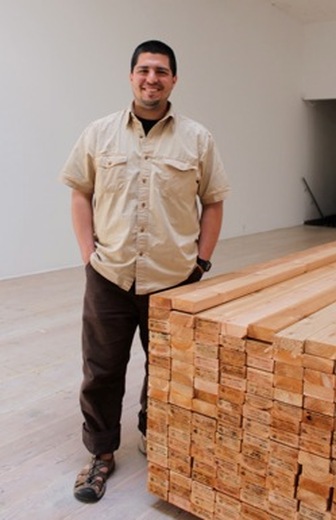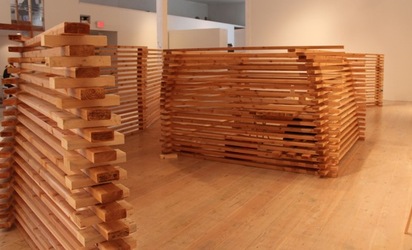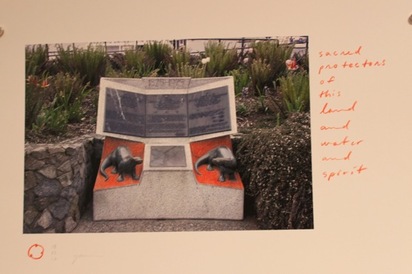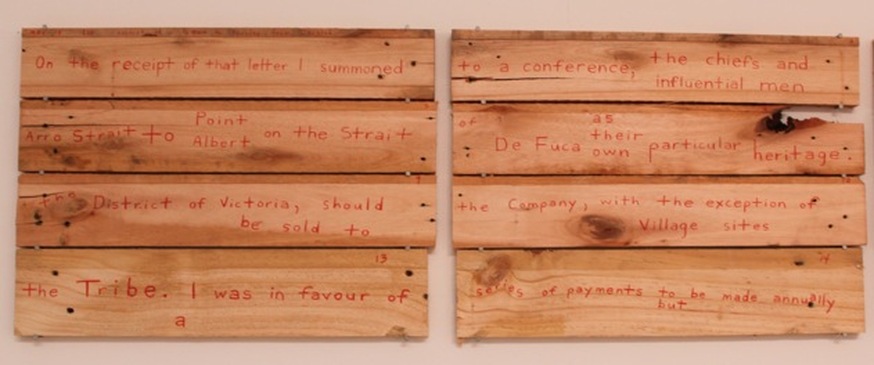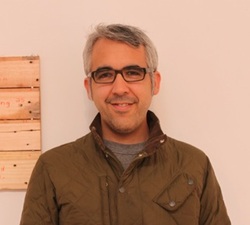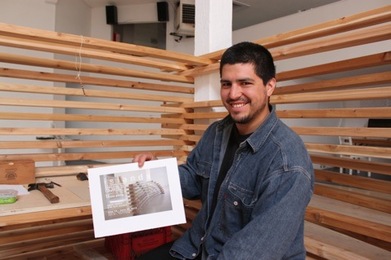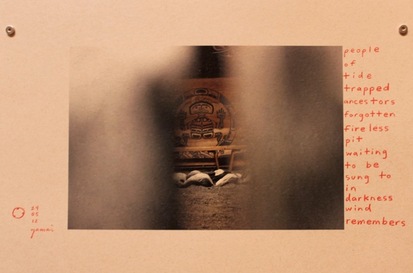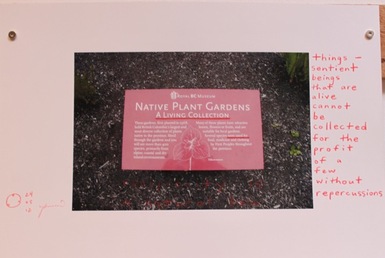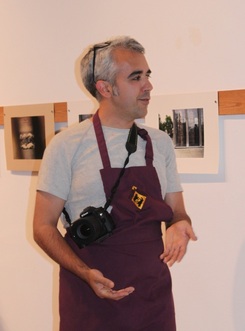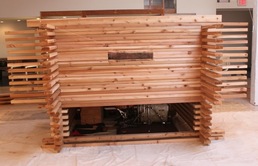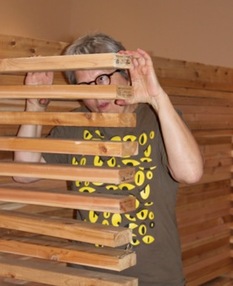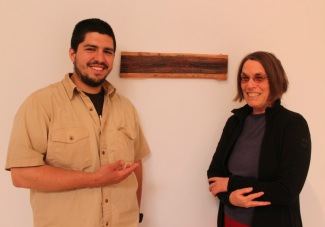islands by Emilio Portal at Open Space May 14 - June 26, 2012
“What would be possible in a world where we all acknowledged the experience, knowledge
and wisdom of the local indigenous people, especially in the area of sustainability?”
Emilio Portal is an indigenous artist with Peruvian and French ancestry.
He asks this important question in islands.
As part of his 11 month residency as Aboriginal Curator at Open Space, Peter Morin invited guest artist Emilio Portal to present a solo exhibition. Emilio’s unfolding performance-based installation featured in this blog-page is called islands. Emilio, a recent MFA grad from UVic, honours local Lekwungen peoples of Vancouver Island. As a guest on the territory, he is gathering images, ideas and stories that relate to contested land issues. Within the dialogue is a invitation to witness the past, negotiate the present and reinvent the future, notes Curator Morin.
Red pencil inscription of text on cedar board (detail) which cites
a May 16, 1850 letter to Barclay from James Douglas:
On the receipt of that letter I summoned to the conference, the chiefs and influential men of the Songees Tribe, which inhabits and claims the District of Victoria, from Gordon Head to Arro Strait to Point Albert on the Strait of De Fuca as their own particular heritage... Paid the sum of 75 Pounds on April 30, 1850 (6,450 pounds in 2011).
|
|
Web Design, Content and Photos: Kate Cino previewed arts events for 18 years at Boulevard magazine. She has a History in Art degree and Public Relations certificate from the University of Victoria. For ten years, she operated an art & framing shop. kate-cino@shaw.ca 250 598-4009 |
